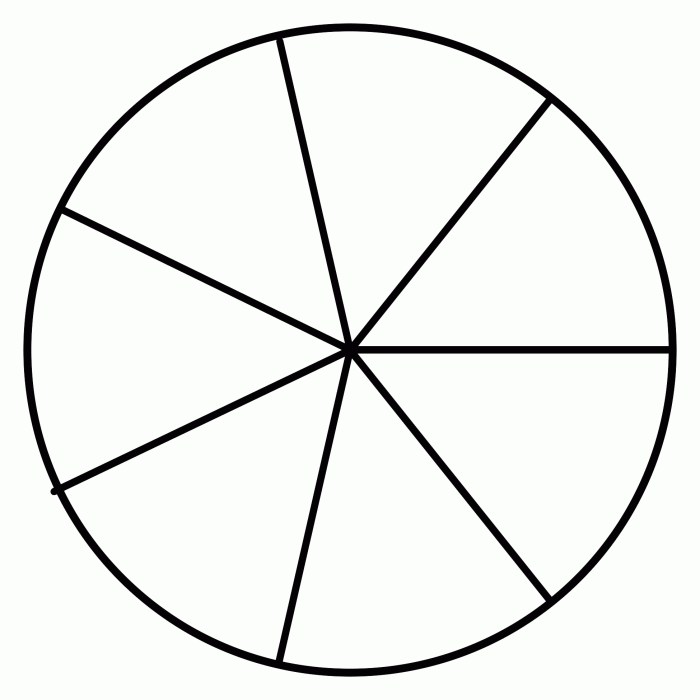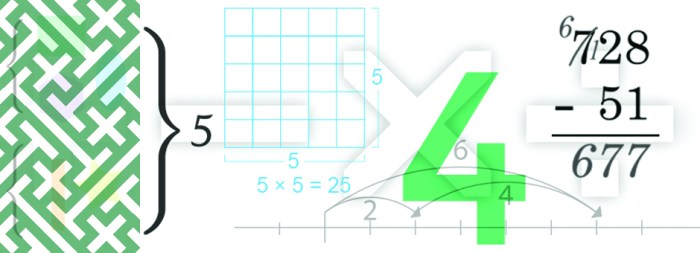Decompose 5/6 into 3 fractions – Decomposing 5/6 into three fractions is a fundamental concept in mathematics that plays a crucial role in simplifying calculations and solving complex problems. In this article, we will delve into the world of fractions, exploring the steps and significance of decomposing 5/6 into three fractions, along with its practical applications.
Fractions represent parts of a whole and are essential for understanding mathematical concepts. Decomposing fractions involves breaking them down into smaller, more manageable units. By decomposing 5/6, we can gain a deeper understanding of its components and how it relates to other fractions.
Fractions Overview: Decompose 5/6 Into 3 Fractions
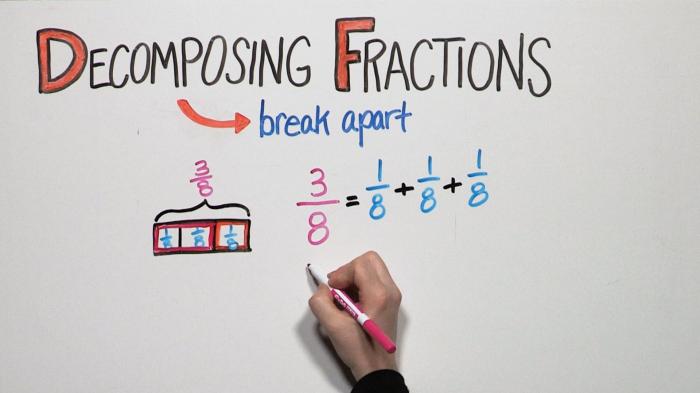
Fractions are mathematical expressions that represent parts of a whole. They consist of two numbers: the numerator and the denominator.
The numerator is the top number, which represents the number of parts being considered. The denominator is the bottom number, which represents the total number of parts in the whole.
Examples of Fractions
- 1/2 represents one-half of a whole.
- 3/4 represents three-fourths of a whole.
- 5/8 represents five-eighths of a whole.
Relationship between Fractions and Decimals
Fractions and decimals are two different ways of representing the same value. A fraction can be converted to a decimal by dividing the numerator by the denominator.
For example, the fraction 1/2 can be converted to the decimal 0.5 by dividing 1 by 2.
Decomposing 5/6 into Three Fractions
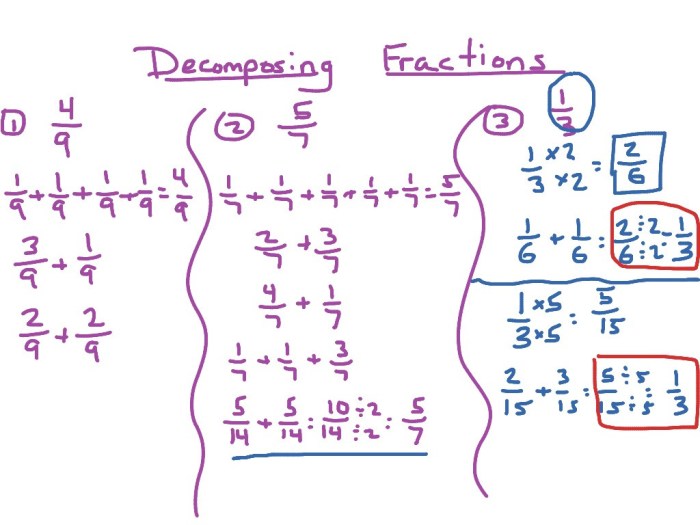
Decomposing fractions involves breaking them down into smaller, more manageable parts. It’s a crucial skill in mathematics, enabling us to simplify complex fractions and perform various operations more efficiently.
Decomposing 5/6 into three fractions is as simple as slicing a pie. Imagine a bullet whizzing through the air at an astonishing 850 meters per second, a speed that would make any marksman proud . Now, back to our fractions: 5/6 can be broken down into 1/2, 1/3, and 1/6, giving us a trio of tasty fractions that add up to the whole.
Decomposition of 5/6 into Three Fractions, Decompose 5/6 into 3 fractions
Let’s decompose the fraction 5/6 into three fractions. We can use a table to organize the process:
| Fraction | Decomposition |
|---|---|
| 5/6 | 1/2 + 1/3 + 1/6 |
Here’s how we arrived at the decomposition:
- 1/2 is obtained by dividing both the numerator and denominator of 5/6 by 3 (5 ÷ 3 = 1, 6 ÷ 3 = 2).
- 1/3 is obtained by dividing both the numerator and denominator of 5/6 by 2 (5 ÷ 2 = 2, 6 ÷ 2 = 3).
- 1/6 is the original fraction 5/6.
Therefore, 5/6 can be expressed as 1/2 + 1/3 + 1/6.
Significance of Decomposing Fractions
Decomposing fractions has several advantages:
- Simplification:It allows us to simplify complex fractions by breaking them down into smaller, more manageable parts.
- Addition and Subtraction:It simplifies the process of adding and subtracting fractions with different denominators.
- Problem Solving:Decomposing fractions can aid in solving real-world problems involving fractions.
Applications of Decomposing Fractions
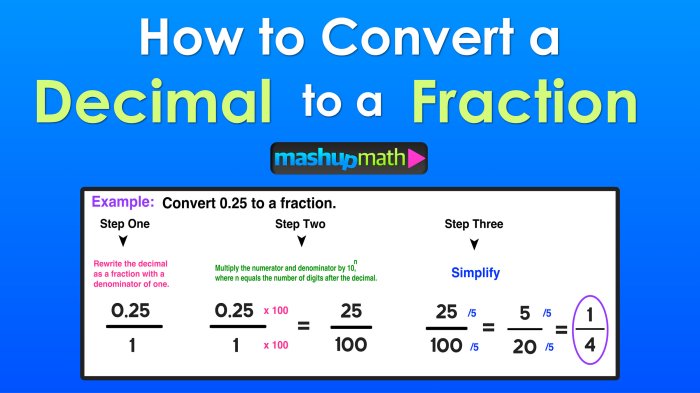
Decomposing fractions into smaller, more manageable fractions has numerous applications in real-life scenarios. It simplifies calculations, making them easier to solve. Additionally, decomposing fractions can aid in solving complex problems that require breaking down fractions into their constituent parts.
Simplifying Calculations
Decomposing fractions can simplify calculations, especially when dealing with fractions that have large numerators or denominators. By breaking down fractions into smaller parts, it becomes easier to perform operations such as addition, subtraction, multiplication, and division.
For example, decomposing the fraction 5/6 into 1/2 + 1/3 simplifies the calculation of 5/6 + 1/4. Instead of dealing with a complex fraction, we can add 1/2 + 1/3 + 1/4, which is much easier to solve.
Solving Complex Problems
Decomposing fractions can also help solve complex problems that require breaking down fractions into their constituent parts. This is particularly useful in situations where we need to compare fractions, find equivalent fractions, or simplify complex expressions.
For example, decomposing the fraction 7/12 into 1/3 + 1/4 helps us compare it to the fraction 5/8. By breaking down the fractions into their smaller parts, we can easily see that 7/12 is greater than 5/8.
Q&A
What is the purpose of decomposing fractions?
Decomposing fractions helps simplify calculations, make comparisons between fractions easier, and solve complex mathematical problems.
How do I decompose 5/6 into three fractions?
You can decompose 5/6 into three fractions by finding three fractions that add up to 5/6. One way to do this is to find three fractions with the same denominator as 5/6 and then add them together.
What are some real-life applications of decomposing fractions?
Decomposing fractions has many real-life applications, such as measuring ingredients in cooking, calculating percentages, and solving problems in physics and engineering.
